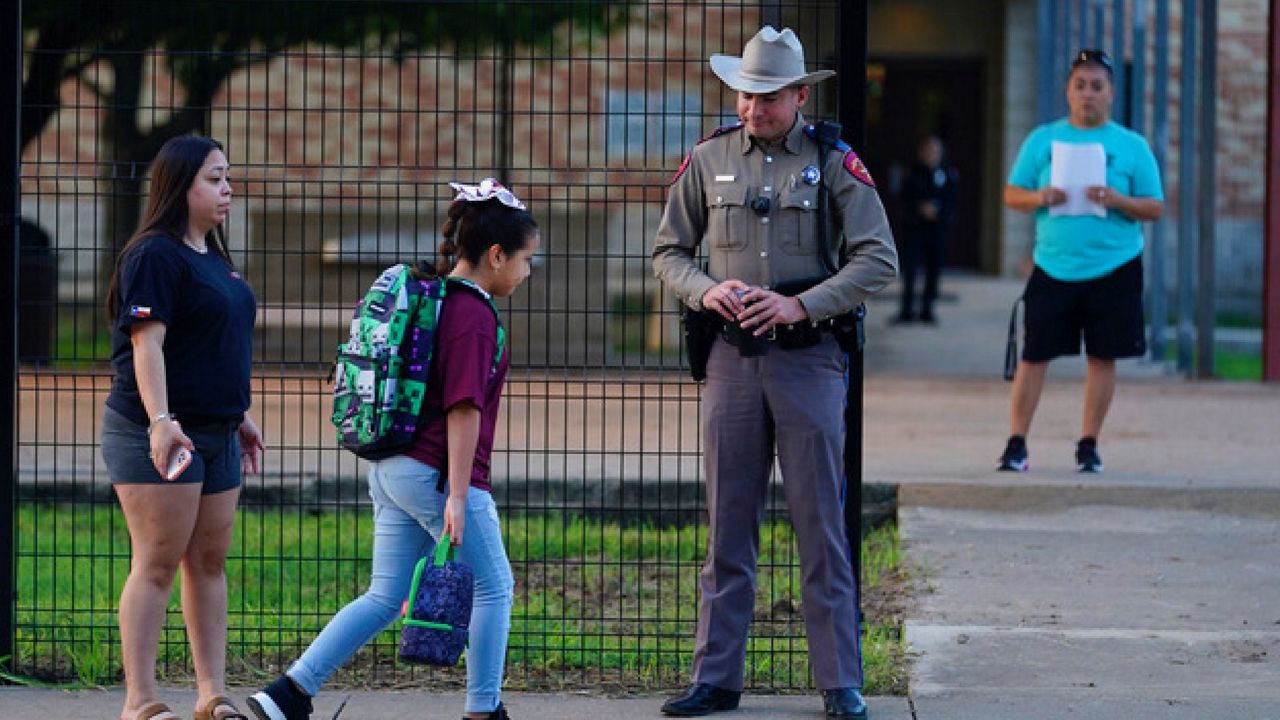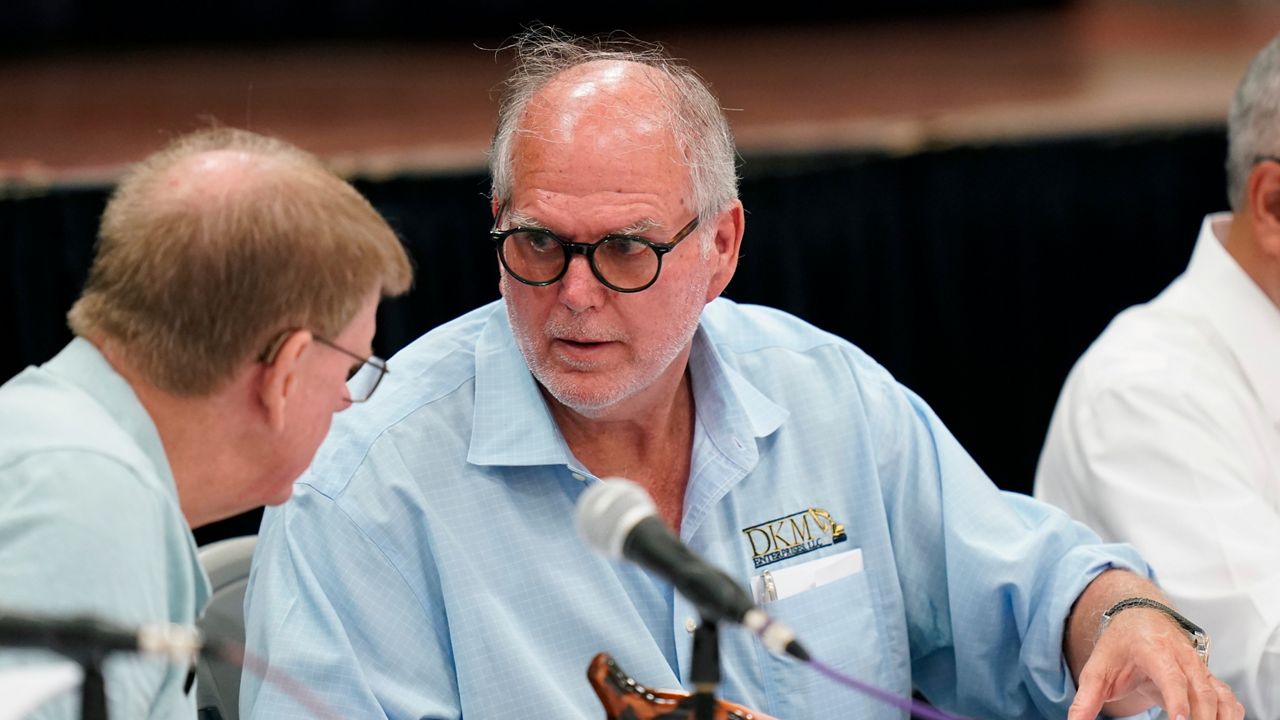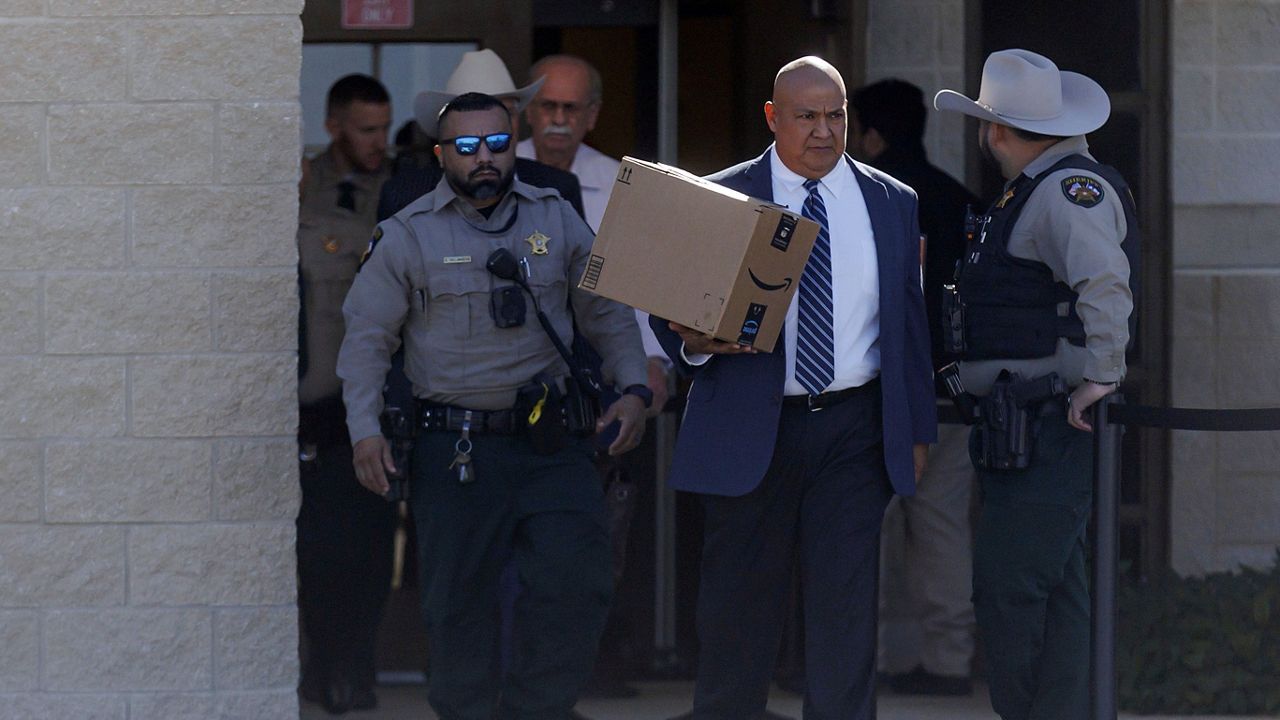The Department of Public Safety’s investigation into its own actions on the day of the Robb Elementary mass shooting last May has identified five officers who will face further review for their actions.
Close to 400 officers — from a variety of local and state law enforcement agencies — converged upon the Robb campus in the wake of a shooting spree on May 24 that claimed the lives of 19 children and 2 teachers.
The school district’s safety plan, which it was required to file with the state, said Uvalde CISD Police Chief Pete Arredondo would establish the command post and take the role of incident command during an emergency.
That that didn’t happen was called a “void of leadership” in a House committee report that reviewed the shooting. DPS Director Steve McCraw, in public testimony before the Senate Committee to Protect Texas, called the law enforcement response to the active shooter attack at Robb Elementary “an abject failure.”
Every agency that responded that day, including DPS, shares in that failure, McCraw wrote in an email to agency staff on July 20.
“Although I remain highly critical of the decision to treat the incident as a barricaded subject by the ranking Consolidated Independent School District police officer on the scene, DPS and other agencies must also be held accountable for their actions or inactions,” McCraw wrote in the email. “It is clear from the evidence law enforcement should have treated this situation as an active shooter event.”
The Robb mass shooting began at 11:33 a.m. The first DPS officer to arrive — a special agent — is noted in the surveillance video at 11:53 a.m. Eventually, 91 DPS officers would be at the scene of the shooting.
Five of those officers now are being reviewed by an internal review panel at DPS. In an update on Wednesday morning, a DPS spokeswoman said two of the five officers have been suspended with pay, pending the outcome of the internal investigation.
The UCISD school board voted to fire Police Chief Pete Arredondo after a closed-door meeting on Aug. 25. Arredondo, who boycotted the special meeting, issued a 17-page letter saying that he was being summarily fired without evidence.
Arredondo, questioned by a special House committee that reviewed the Robb mass shooting, said he opened a door to the classroom next to the shooter’s location, saw no one in the room and assumed the suspect must be “cornered.”
“We have this guy cornered. We have a group of officers on… the north side, a group of officers on the south side, and we have children now that we know are in these other rooms,” Arredondo told the three-member House committee. “My thought was: ‘We’re a barrier; get these kids out — not the hallway, because the bullets are flying through the walls, but get them out the windows, because, I know, on the outside it’s brick.’”
The choice to treat the shooter as a barricaded subject instead of an active shooter was a “terrible tragic mistake” that led to lengthy delays, according to the special House report. Most of the shooter’s rounds —which the committee counted on audio tape — occurred before officers entered the building.
Arredondo’s choice — to try to negotiate with the shooter — used up a total 77 minutes. Sen. Roland Gutierrez, D-San Antonio, and others have speculated that additional lives were lost in that time.
McCraw’s directive to DPS staff to respond to any situation in which a shooter fires upon a school campus to be treated as an active shooter that should be neutralized or killed.
“DPS Officers responding to an active shooter at a school will be authorized to overcome any delay to neutralizing an attacker,” McCraw wrote. “When a subject fires a weapon at a school, he remains an active shooter until he is neutralized and is not to be treated as a ‘barricaded subject’. We will provide proper training and guidelines for recognizing and overcoming poor command decisions at an active shooter scene.”
The ALERRT Center at Texas State University, which trains Texas law enforcement in how to respond to active shooter situations, reviewed the minute-by-minute timeline of the Robb mass shooting. It noted three circumstances that could, but didn’t, stop the shooter before he entered the school: an exterior door that a teacher could not lock; a responding UCISD police officer who failed to see the shooter crossing the parking lot; and an Uvalde PD officer with a rifle, who asked his supervisor for permission to shoot the suspect.
That Uvalde PD officer — who would have heard gunfire near the school — would have been justified in shooting the suspect, according to the ALERRT review of the incident.
“An individual is justified in using deadly force when the individual reasonably believes the deadly force is immediately necessary to prevent the commission of murder (amongst other crimes),” according to the report. “In this instance, the UPD officer would have heard gunshots and/or reports of gunshots and observed an individual approaching the school building armed with a rifle.”








)
